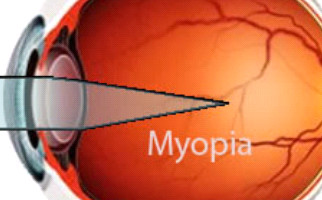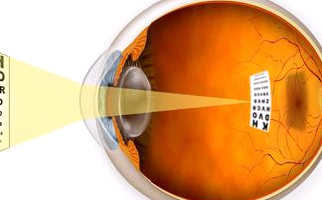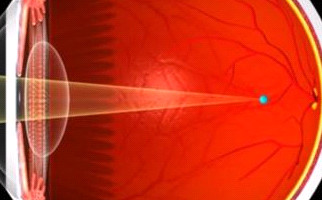Μyopia
What exactly is myopia (nearsightedness)?
Myopia (nearsightedness) is a refractive error of the eye, in which incoming light rays (relections) do not focus on the retina layer, as occurs in normal emmetropic eyes, but on a point in front of it.
Myopia symptoms:
In a myopic eye, while near objects are clearly seen, those farther away perceived blur and in fact they are out of focus.
Myopia causes:
Myopia (nearsightedness) is possible to occur due to increased refractive power of the eye, when the corneal layer is more convex than normal (refractive myopia), increased sagittal axis of the eye (axial myopia> 6 diopters), or a combination of them. There is no clear answer whether myopia is a hereditary condition, however an infant can be born with congenital myopia. Usually myopia occurs in ages between 5 and 16 and it becomes stable at the age of 22. Everyday activities, such as reading and computer use contribute to the development of this specific refractive error. It is worth mentioning that during pregnancy, mainly due to hormonal changes, the pre-existing myopia deterioration is something possible. To end up with, in degenerative myopia (> 6D), apart from the ordinary symptoms, ocular layer degenerative lesions occur, increasing the possibility of a retinal detachment.
Myopia treatment and correction:
- Eye spectacles with negative or diverging lenses
- Contact lenses usually soft or semi-hard
- Laser refractive procedure (excimer laser)
- Surgical procedure for phakic IOL implantation (phakic intraocular lens) and replacement of eye’s natural, crystalline lens (usually in cases of extremely high myopia)















